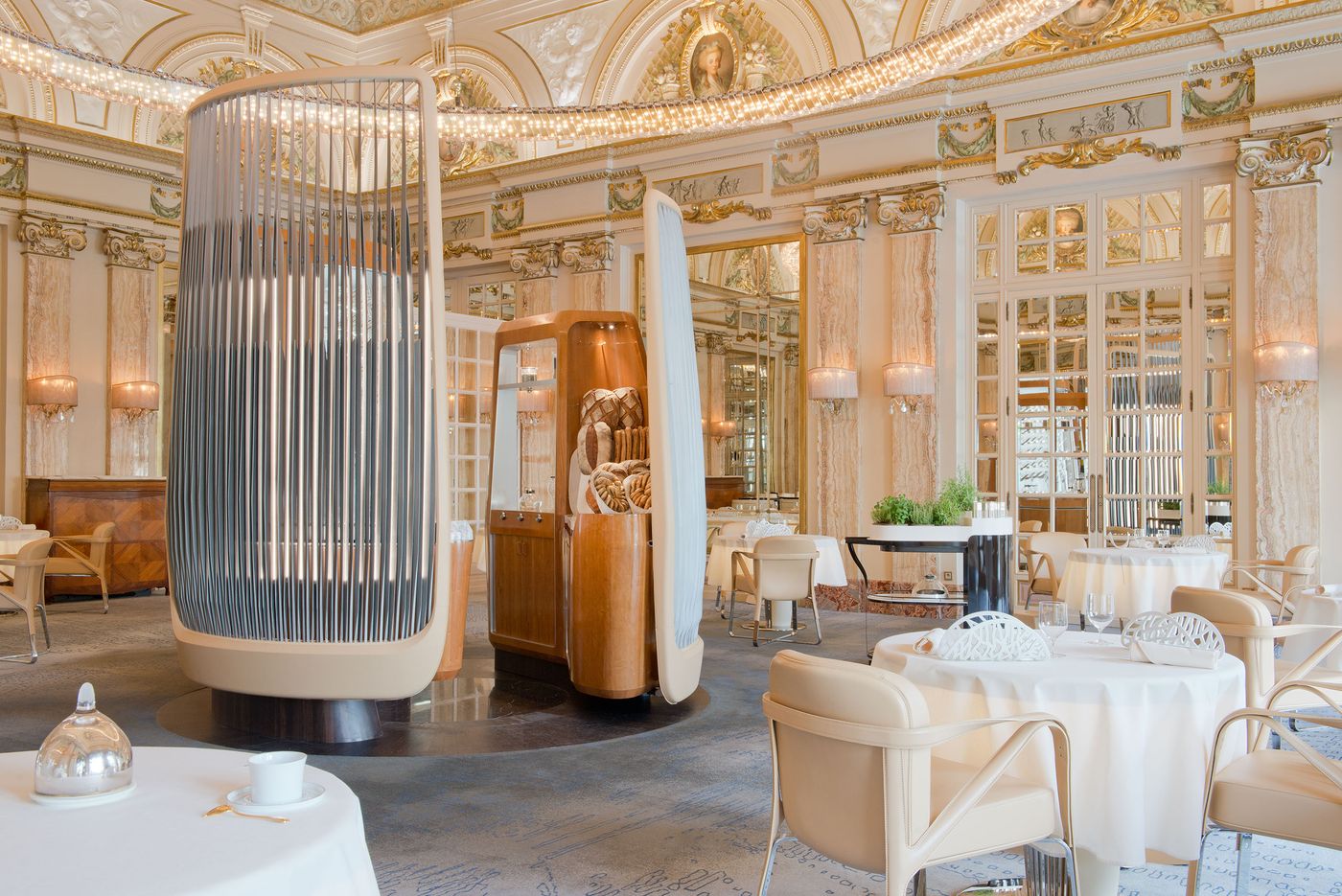
A New Belle Epoque for Alain Ducasse at the Hôtel de Paris in Monte-Carlo
Words by Eric David
Location
Monte-Carlo, Monaco
A New Belle Epoque for Alain Ducasse at the Hôtel de Paris in Monte-Carlo
Words by Eric David
Monte-Carlo, Monaco
Monte-Carlo, Monaco
Location
It takes great ambition and audacity to open your first restaurant in cosmopolitan Monte-Carlo with a pledge to win three Michelin stars within four years, and even greater talent and determination to achieve it in less than three, yet Alain Ducasse did just that in 1987, catapulting Le Louis XV onto the lists of the world's top restaurants where it has remained ever since. Some thirty years and 25 restaurants later, Ducasse’s passion for architecture and design and his love for the Riviera led to the restaurant's complete makeover that spared - in the name of comfort, pleasure and excellence - neither the interior design nor the menu, not even its name.
Located at the historic Hôtel de Paris, “Alain Ducasse at the Hôtel de Paris”, as the restaurant is now called, re-opened its doors in April 2015 with a new menu by chef Dominique Lory and Alain Ducasse that showcases the products, flavors and colors of the Riviera with modernity and youth, and a renovated dining room by Patrick Jouin and Sanjit Manku —Ducasse's collaborators in several other exceptional projects such as the Jules Verne restaurant at the Eiffel Tower and the recently opened “Alain Ducasse au Plaza Athénée”. Designed as a retro-futuristic antidote to the grandiosity of the French Belle Epoque décor, the new dining room interjects an element of modernity into a place of mythical undertones.
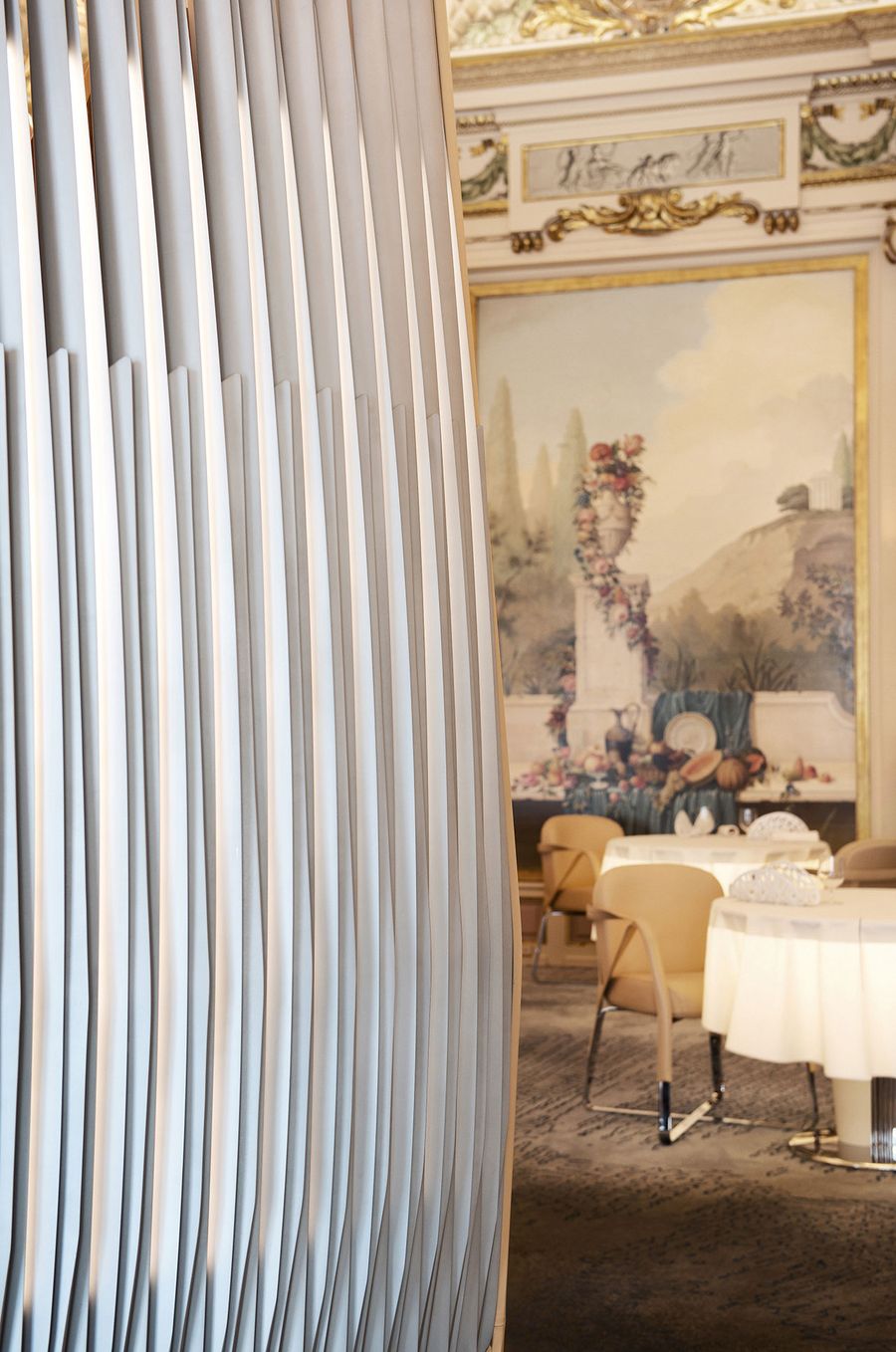
Photo by Hélène Hilaire.

Photo by Hélène Hilaire.
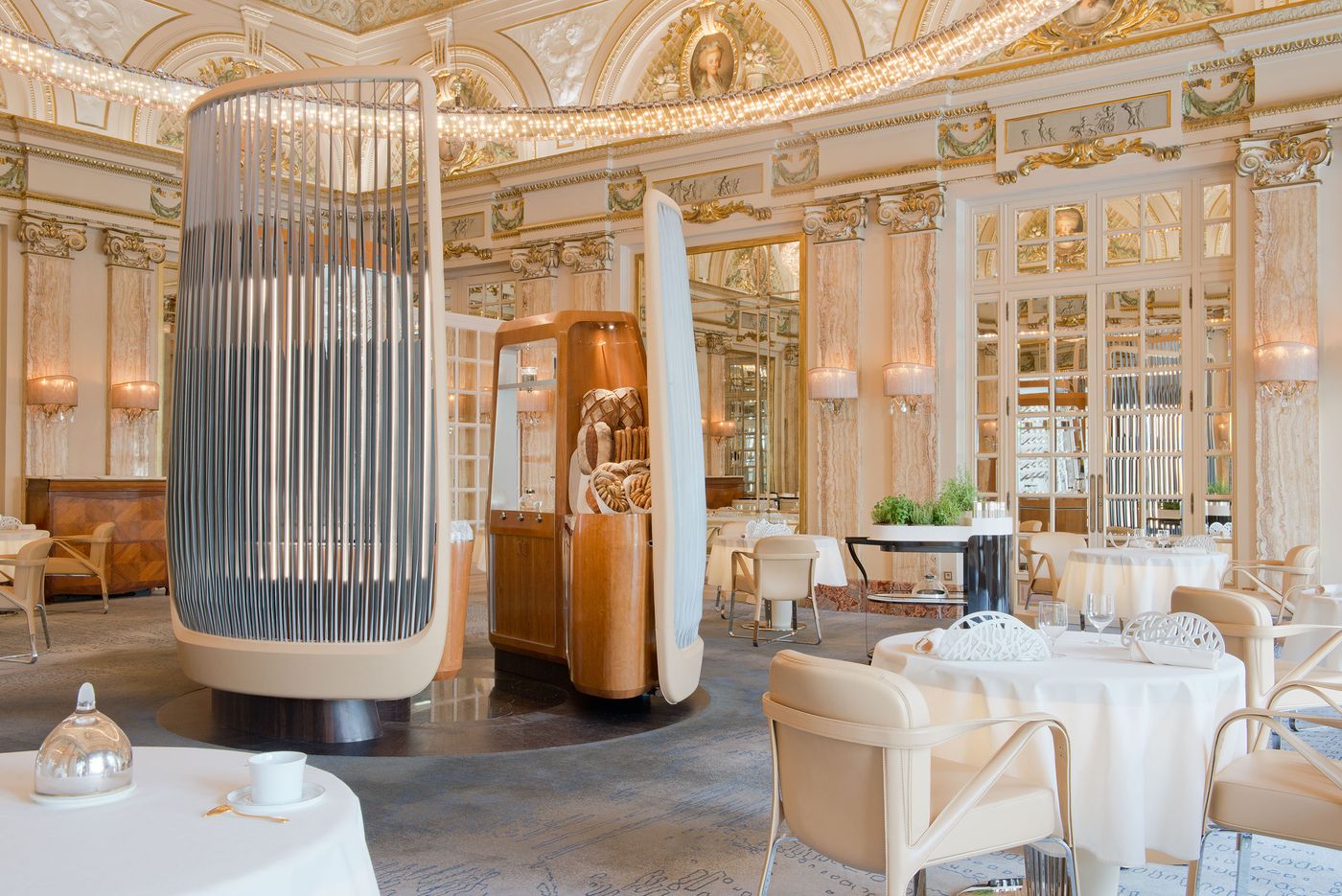
Photo by Hélène Hilaire.
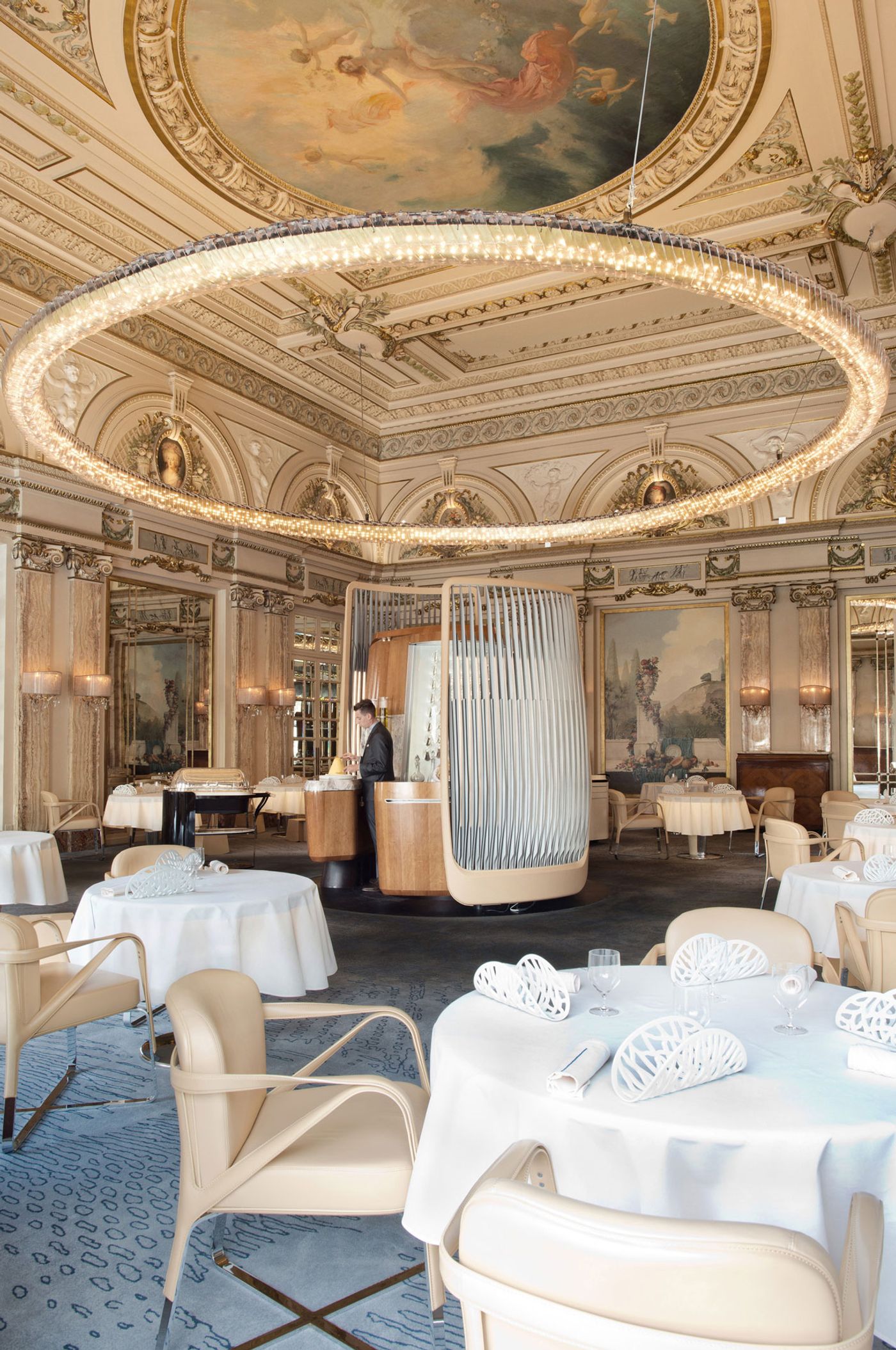
Photo by Hélène Hilaire.
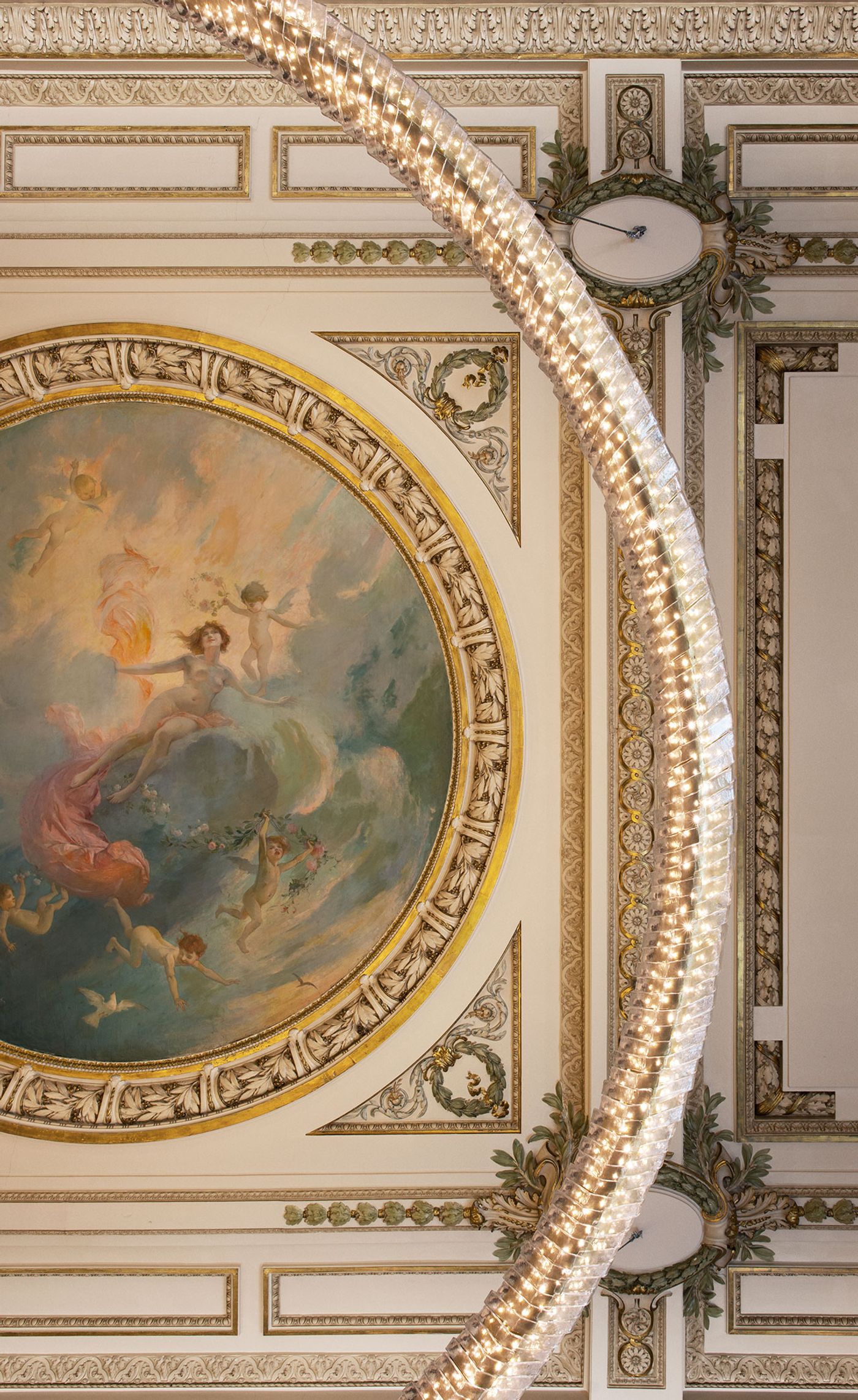
Photo by Hélène Hilaire.
Organizationally, Jouin and Manku’s design was inspired by the room’s central ceiling fresco, a nymph surrounded by cherubs, painted by Marie-Félix Hippolyte Lucas when the hotel was built. Set within a ceiling rose, its shape is reverberated in the room’s configuration as a series of concentric circles, the most eminent of which is the halo-shaped chandelier suspended underneath. Made by Aristide Najean out of 800 pieces of Murano glass, it dominates the room with its glittering diameter of 7.5 meters while magically illuminating the ornate ceiling with a soft glow.
Programmatically, the design was informed by the desire to create a new style of service whereby the guests become spectators to “a choreographed spectacle of serving staff” and unfolding furniture. Thus, standing at the center of the room, “L’Office”—a French word that describes an important preparation place in a restaurant—serves as the central service station, or more accurately, the “stage” for the ballet performed by the front-of-house team. Made out of cherry wood and glass, it is shielded by two metal-bladed wings that open up when the service begins to reveal the bread, oils and butter section on the one side, and the liqueurs and chocolates on the other.
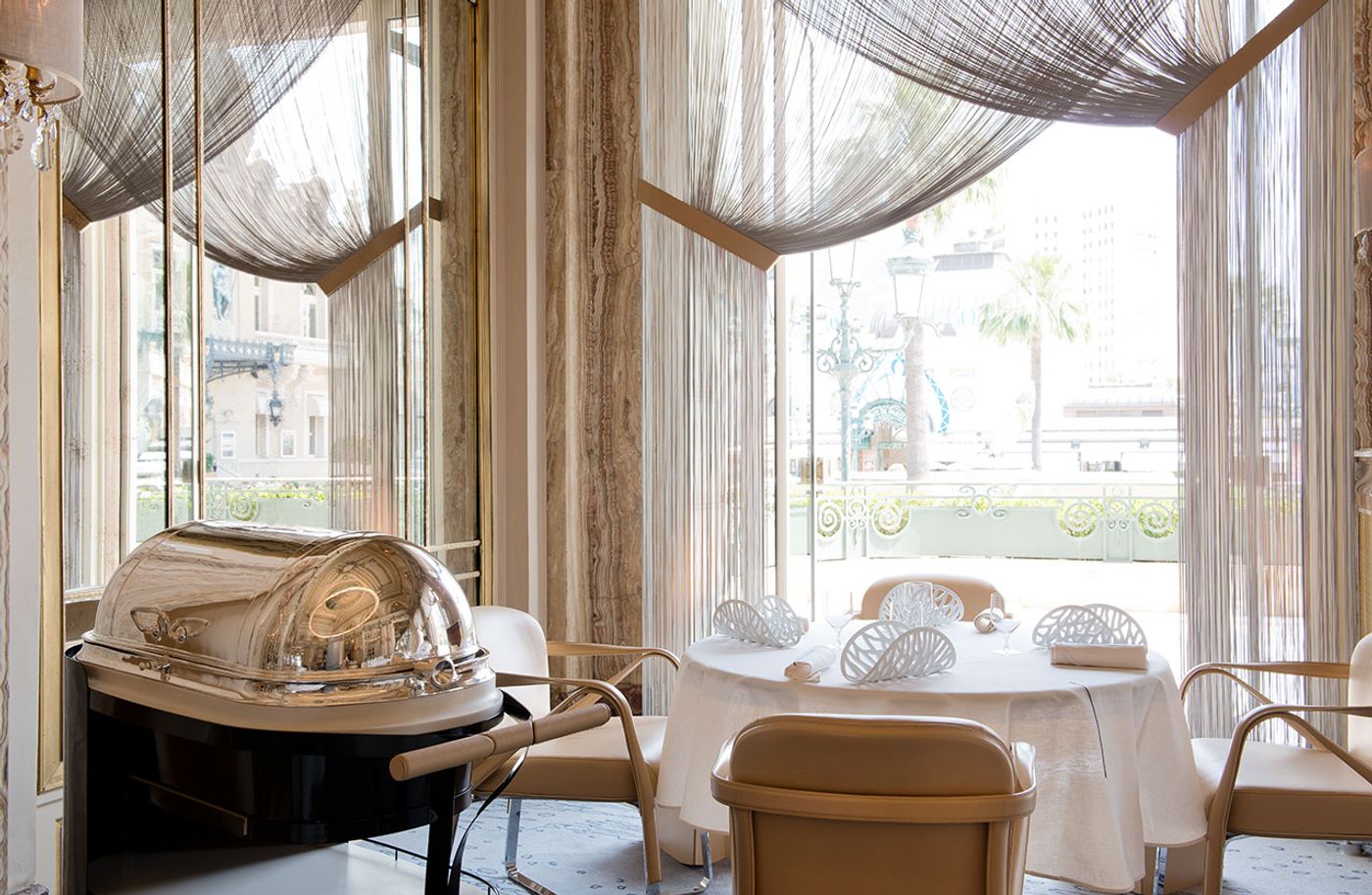
Photo by Hélène Hilaire.
“L’Office” itself stands on a circular inlay of ebony and dark stone around which fans out a custom-designed carpet of abstract patterns in muted blues and deep greys that harmoniously complement the earthy shades and gilded details of the existing room décor. The latter are also picked up by the natural colors of the dining room's furniture, as seen in the cream-coloured leather chairs, upholstered by master-craftsman Pierre-Yves Le Floch, and in the round tables featuring mirror-polished, fluted stainless-steel legs, a leather underside and fine linen tablecloths with navy-blue stitching picking up the colours of the carpet. Designed by Jouin and Manku with a modern sensibility in mind, they evoke comfort and luxuriance while providing tactile pleasure.

Photo by Hélène Hilaire.
No detail in the restaurant has been left unattended, from the cutlery and the crockery—the former a 1906 design by Josef Hoffmann recreated by Alessi, the latter featuring a line of exclusive objects by Pierre Tachon who also created the new restaurant’s graphic identity—to the deconstructed curtains made out of thousands of individual threads and the minimalist uniforms by Hermès designer Marine Halna du Fretay. Similarly thought out and meticulously realised, the service trolleys and portable “Vaisselier”—a sleek, modernist design made out of Corian and cherry wood that allows for food preparation next to the tables—elegantly swirl around the space, completing an exceptional choreography of culinary wonders amidst a setting of mythical elegance that constitutes the experience of dining in “Alain Ducasse at the Hôtel de Paris”.
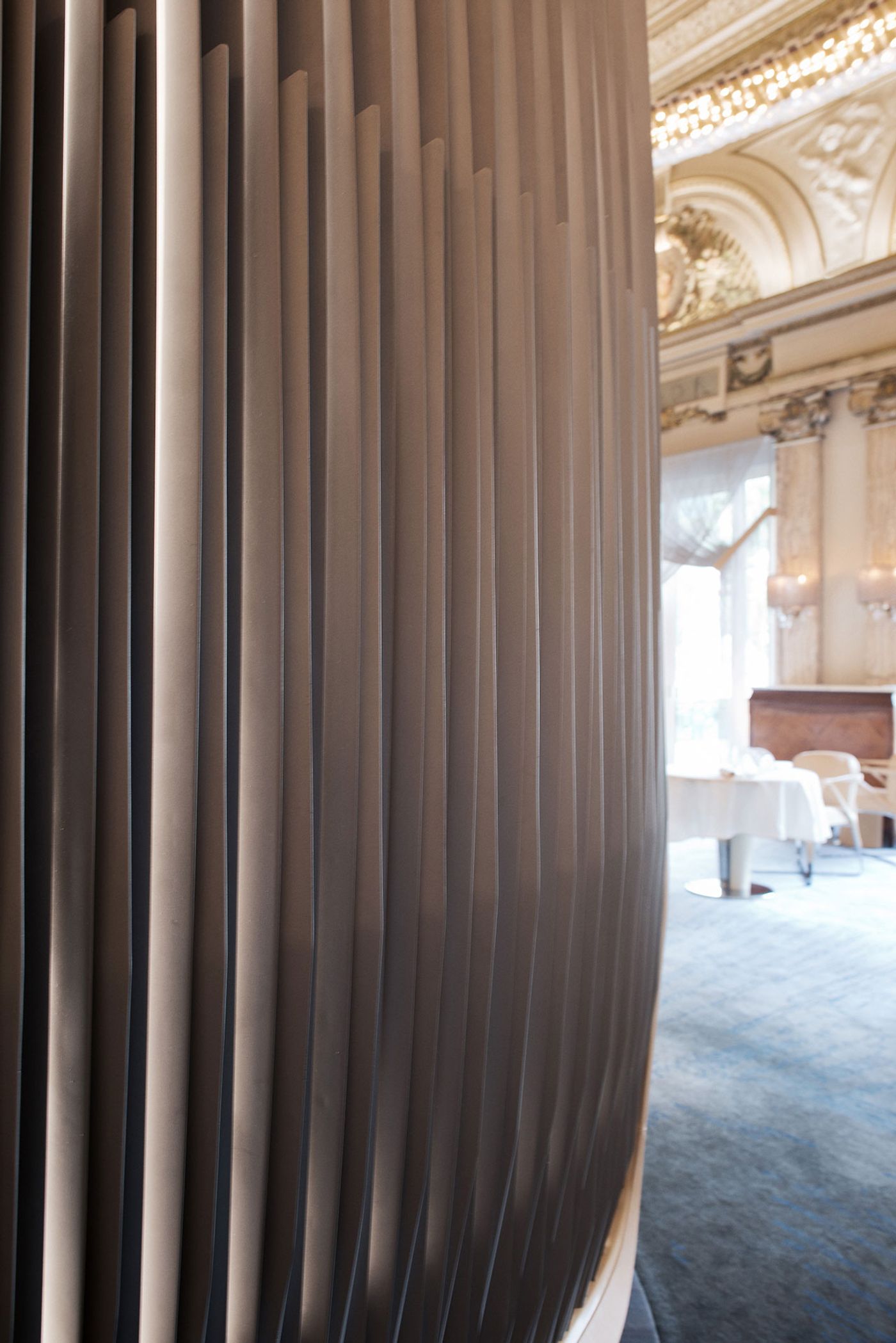
Photo by Hélène Hilaire.
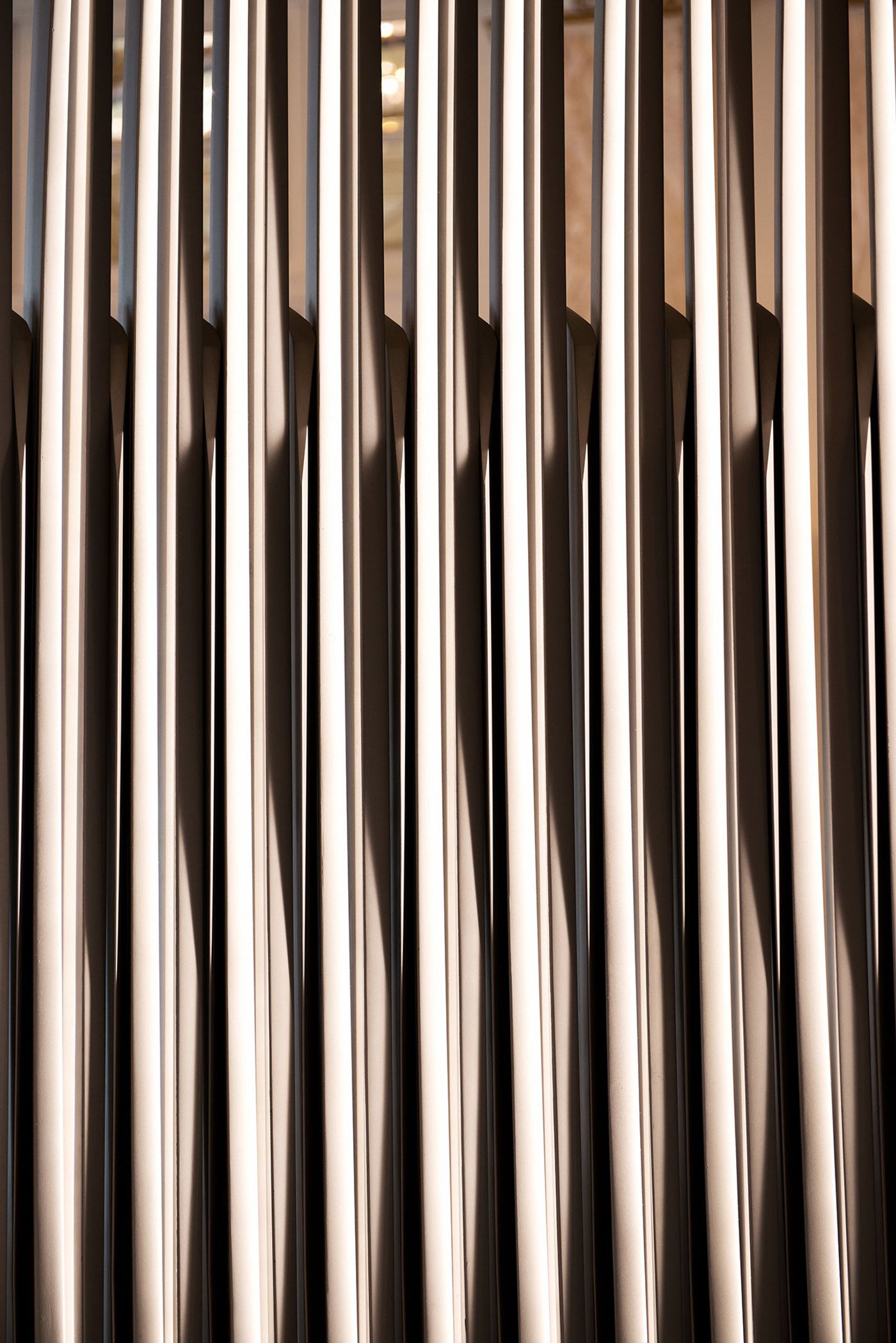
Photo by Hélène Hilaire.